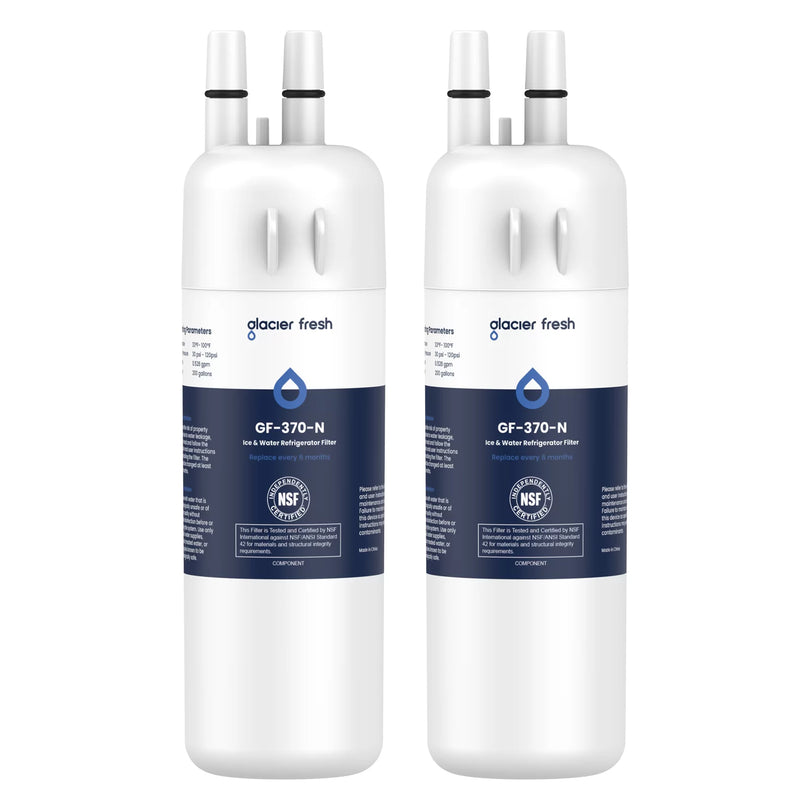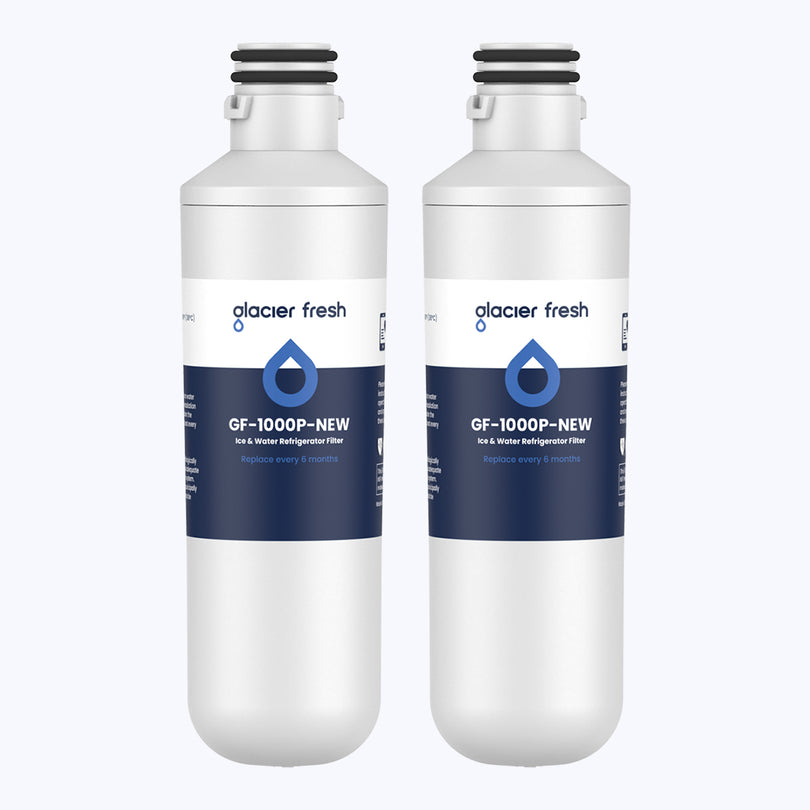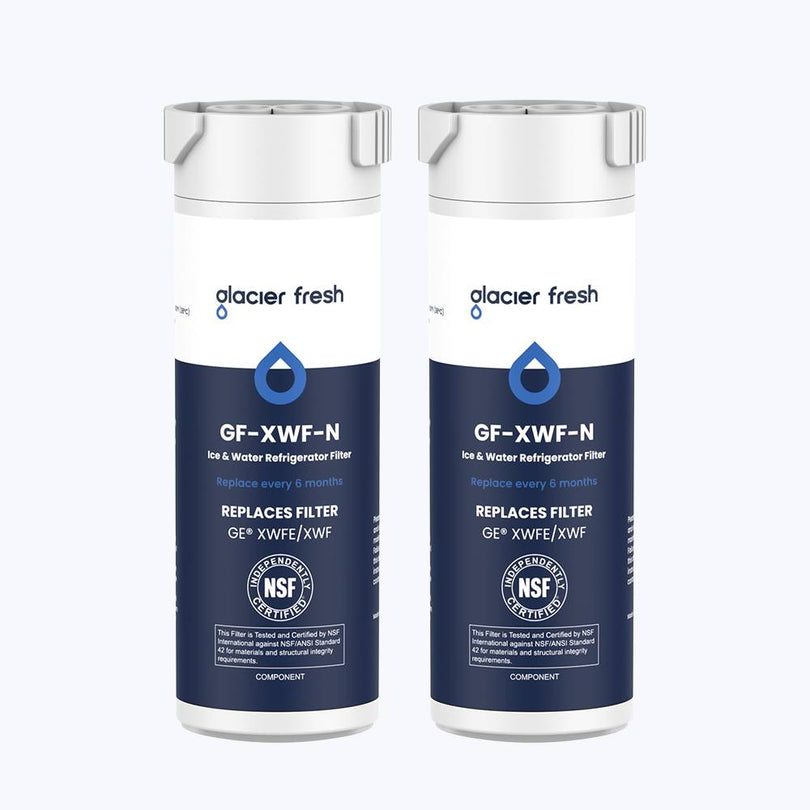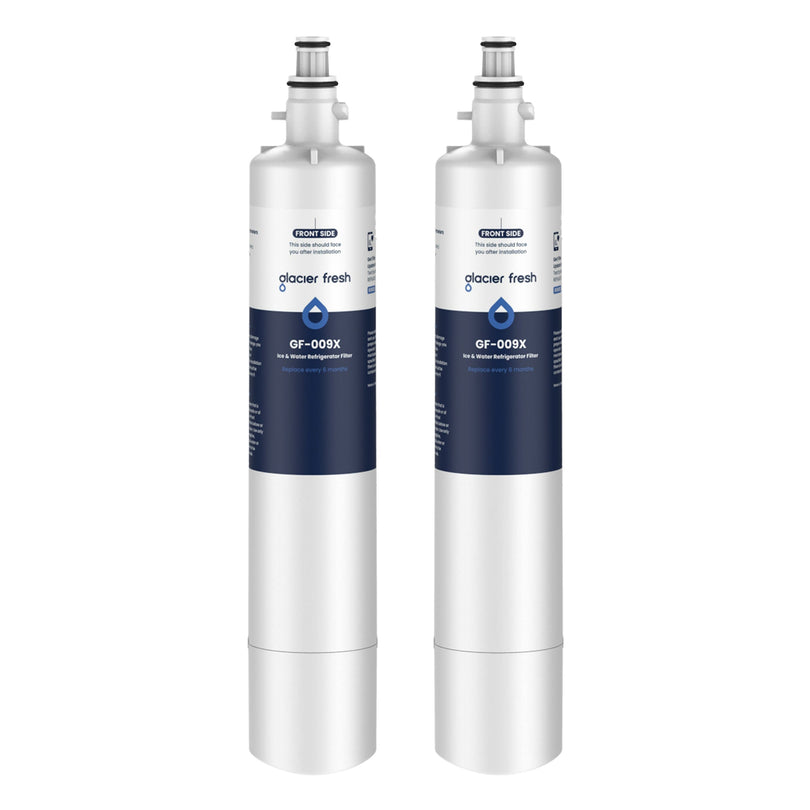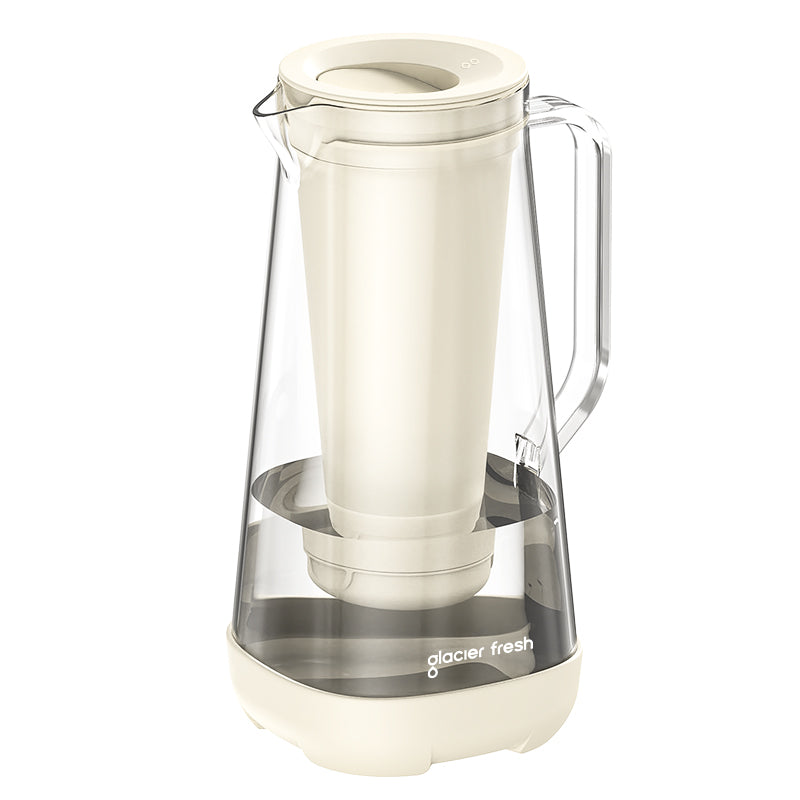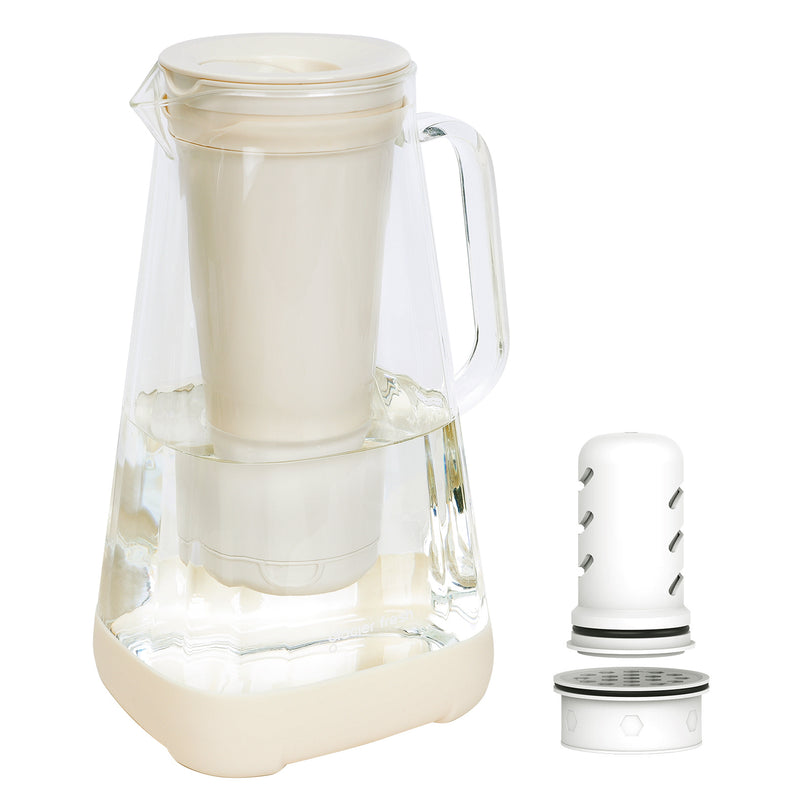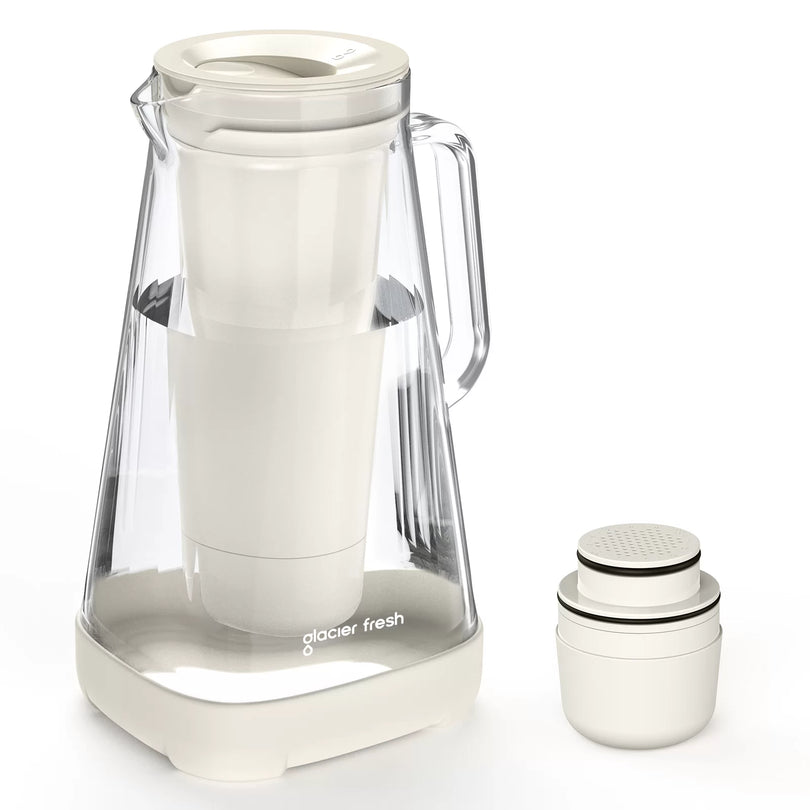Table of Contents:
Mikroplastik verstehen
Quellen von Mikroplastik in Flaschenwasser
Risiken beim Konsum von Flaschenwasser mit Mikroplastik
Möglichkeiten zur Reduzierung der Mikroplastikbelastung in Flaschenwasser
Wichtige Überlegungen bei der Auswahl von Flaschenwasser
Gefiltertes Wasser: die besten Alternativen zu Flaschenwasser
FAQs
Abschluss
Sie haben wahrscheinlich schon von der Sorge um Mikroplastik in unseren Ozeanen gehört, aber wussten Sie, dass es auch in Ihrem Trinkwasser enthalten ist? Ja, Sie haben richtig gelesen. Flaschenwasser, das viele für sauber und gesund halten, ist möglicherweise nicht so rein, wie wir denken. Diese winzigen Plastikpartikel, kleiner als ein Sesamkorn, gelangen in unser Flaschenwasser und in unseren Körper.
Doch wie gelangen sie dorthin? Welche Risiken bergen sie für unsere Gesundheit? Und vor allem: Wie können wir unsere Belastung reduzieren? In diesem Artikel klären wir die Wahrheit über Mikroplastik in Flaschenwasser und erläutern einige wichtige Aspekte bei der Auswahl Ihres Wassers. Außerdem stellen wir die Alternative gefiltertes Wasser vor. Bleiben Sie also dran, denn wir befassen uns mit diesem weniger bekannten Problem, das unsere Gesundheit und Umwelt betrifft.
Mikroplastik verstehen

Sie haben vielleicht schon von Mikroplastik gehört, aber wissen Sie, was es ist und wie es in Ihr Flaschenwasser gelangt? Mikroplastik sind kleine Plastikteile, in der Regel kleiner als 5 mm, die durch einen Prozess namens Kunststoffabbau aus größeren Plastikgegenständen entstehen. Dabei zerfällt Kunststoff durch Umwelteinflüsse wie Sonnenlicht oder Hitze in kleinere Stücke.
Mikroplastik hat gravierende Auswirkungen auf die Umwelt. Es dringt in marine Ökosysteme ein und schädigt Organismen, die es mit Nahrung verwechseln. Die winzigen Plastikpartikel können giftige Chemikalien aufnehmen und werden noch gefährlicher, wenn sie von Meereslebewesen aufgenommen werden.
Doch nicht nur die Ozeane sind betroffen. Mikroplastik hat seinen Weg auch in unser Flaschenwasser gefunden. Durch den Abbau von Plastik zersetzen sich mikroskopisch kleine Partikel und vermischen sich mit dem Wasser, das für unseren Verbrauch abgefüllt wird. Dies gibt Anlass zu Bedenken hinsichtlich der menschlichen Gesundheit, da die langfristigen Auswirkungen der Aufnahme von Mikroplastik noch weitgehend unbekannt sind.
Das scheinbar harmlose Flaschenwasser, das Sie trinken, kann also verstecktes Mikroplastik enthalten. Es ist höchste Zeit, dass wir uns diesem Problem widmen und nach Lösungen zum Schutz unserer Gesundheit und der Umwelt suchen.
Quellen von Mikroplastik in Flaschenwasser
Haben Sie sich schon einmal gefragt, woher die winzigen Plastikpartikel in Ihrem Lieblingsgetränk kommen? Es gibt verschiedene Quellen für Mikroplastik in Flaschenwasser, und einige davon werden Sie vielleicht überraschen. Schon der Produktionsprozess selbst kann zu einer Verunreinigung mit Mikroplastik führen. Winzige Fragmente können sich während der Herstellung lösen und im Produkt landen. Auch die Abfülltechnik spielt eine wichtige Rolle. Mikroplastik kann während der Abfüllung ins Wasser gelangen, insbesondere wenn keine geeigneten Filtersysteme vorhanden sind.
Darüber hinaus kann die Wasserquelle mit Mikroplastik verunreinigt sein, was zu regionalen Kontaminationsunterschieden führt. Beispielsweise kann Wasser, das in Gebieten mit höherer Plastikverschmutzung abgefüllt wird, mehr Mikroplastik enthalten. Die Methoden zur Mikroplastikerkennung haben sich verbessert, sodass wir diese Partikel im Wasser identifizieren und quantifizieren können. Es ist jedoch wichtig zu bedenken, dass selbst mit fortschrittlichen Erkennungsmethoden aufgrund der geringen Größe und der unterschiedlichen Dichte möglicherweise nicht alle Mikroplastikpartikel erkannt werden.
Risiken beim Konsum von Flaschenwasser mit Mikroplastik
Der Konsum von mit Mikroplastik verunreinigtem Flaschenwasser birgt erhebliche Risiken für die menschliche Gesundheit, die Umwelt und die Tierwelt. Mikroplastik, winzige Plastikpartikel mit einer Größe von weniger als 5 mm, haben nachweislich schädliche Auswirkungen auf Lebewesen. Für eine von Orb Media durchgeführte Studie wurden 259 Flaschenwasserproben von elf bekannten Marken aus neun verschiedenen Ländern analysiert.
Schockierenderweise enthielten 93 % dieser Proben Mikroplastikpartikel. Diese alarmierende Entdeckung unterstreicht die weit verbreitete Präsenz von Mikroplastik in Flaschenwasser und gibt Anlass zur Sorge über die potenziellen Gesundheitsrisiken, die mit dem Konsum dieser Partikel verbunden sind.
Mikroplastik führt nicht nur Fremdstoffe in den menschlichen Körper ein, sondern fungiert auch als Träger giftiger Chemikalien. Beim Verzehr können diese schädlichen Zusatzstoffe ins Wasser gelangen und dort gesundheitliche Probleme verursachen. Da die Verschmutzung durch Plastikmüll weiter zunimmt, ist zudem mit einem Anstieg der Mikroplastikkonzentration in Gewässern und damit auch in Flaschenwasser zu rechnen.
Die Risiken des Konsums von Flaschenwasser mit Mikroplastik gehen über die menschliche Gesundheit hinaus. Mikroplastik kann auch verheerende Auswirkungen auf die Umwelt und die Tierwelt haben. Diese Partikel können sich in Ökosystemen ansammeln und zu Störungen der Nahrungsketten, Beeinträchtigungen der Fortpflanzung und sogar zum Tod von Meereslebewesen führen.
Möglichkeiten zur Reduzierung der Mikroplastikbelastung in Flaschenwasser
Wasserfilterung mit Aktivkohle
Um die Mikroplastikbelastung in Ihrem Flaschenwasser zu reduzieren, können Sie es zunächst mit Aktivkohle filtern, die schädliche Partikel einfängt und entfernt. Aktivkohle ist eine hochporöse Kohlenstoffform mit einer großen Oberfläche, die es ihr ermöglicht, Schadstoffe zu adsorbieren. Wenn Wasser durch Aktivkohlefilter fließt, zieht die Kohle Mikroplastik an und bindet es, sodass es nicht in das gefilterte Wasser gelangt. Diese Methode ist besonders effektiv bei der Entfernung kleinerer Mikroplastikpartikel, die in Flaschenwasser vorhanden sein können. Darüber hinaus können Aktivkohlefilter auch andere Verunreinigungen wie Chlor, Gerüche und Geschmacksstoffe entfernen und so den Gesamtgeschmack und die Qualität des Wassers verbessern.
Verwendung von Glas- oder Edelstahlflaschen

Glas- oder Edelstahlflaschen bieten eine zuverlässige und umweltfreundliche Alternative und sorgen für ein saubereres und sichereres Trinkerlebnis. Im Gegensatz zu Plastikflaschen enthalten Glas- und Edelstahlflaschen keine schädlichen Chemikalien, die ins Wasser gelangen können. Daher besteht keine Gefahr einer Mikroplastikverunreinigung durch diese Materialien.
Glasflaschen sind porenfrei, daher leicht zu reinigen und verhindern Bakterien- und Schimmelbildung. Edelstahlflaschen sind ebenfalls eine gute Option, da sie langlebig sind und Getränke länger heiß oder kalt halten können.
Vermeidung von Einweg-Plastikflaschen
Indem Sie Einweg-Plastikflaschen vermeiden und sich für wiederverwendbare Alternativen wie Glas- oder Edelstahlflaschen entscheiden, können Sie Ihre Belastung durch Mikroplastik in Flaschenwasser deutlich reduzieren. Einweg-Plastikflaschen tragen erheblich zur Mikroplastik-Verschmutzungskrise bei, da sie in unseren Wasserquellen oft in winzige Partikel zerfallen.
Durch den Umstieg auf Mehrwegflaschen minimieren Sie Ihre Belastung mit Mikroplastik und tragen dazu bei, die Nachfrage nach Einwegplastik zu senken. Wenn Sie also das nächste Mal zur Wasserflasche greifen, sollten Sie in eine Mehrwegflasche investieren und so einen positiven Beitrag zum Umweltschutz leisten.
Entscheiden Sie sich für Flaschenwassermarken mit Mikroplastiktests
Durch die Wahl von Flaschenwassermarken, die regelmäßig auf Mikroplastik getestet werden, können Verbraucher sicher sein, dass sie sich bewusst für Unternehmen entscheiden, denen die Gesundheit und das Wohlbefinden von Mensch und Umwelt am Herzen liegen. Diese Marken wissen, wie wichtig es ist, dass ihre Produkte frei von Mikroplastik sind, und ergreifen proaktive Maßnahmen zur Überprüfung der Wasserqualität.
Durch strenge Tests können diese Unternehmen Mikroplastikpartikel in ihrem Flaschenwasser erkennen und eliminieren und so das Belastungsrisiko für Verbraucher verringern. Durch die Entscheidung für diese Marken können Einzelpersonen ihre Belastung mit Mikroplastik minimieren und zum übergeordneten Ziel beitragen, die Plastikverschmutzung in unseren Ökosystemen zu reduzieren.
Unterstützung von Richtlinien und Initiativen zur Reduzierung von Plastik

Die Unterstützung von Richtlinien und Initiativen zur Eindämmung der Plastikverschmutzung ist entscheidend für den Erhalt unseres Planeten und die Sicherung einer nachhaltigen Zukunft für kommende Generationen. Regierungen und Organisationen weltweit ergreifen Maßnahmen, um Plastikmüll und seine schädlichen Umweltauswirkungen zu reduzieren. Eine wichtige Initiative ist die Umsetzung von Richtlinien zur Plastikreduzierung, wie beispielsweise das Verbot von Einwegplastik und die Förderung wiederverwendbarer Alternativen.
Darüber hinaus ist es wichtig, Kampagnen zu unterstützen, die das Bewusstsein für die Auswirkungen der Plastikverschmutzung schärfen und Einzelpersonen dazu ermutigen, ihren Plastikverbrauch zu reduzieren. Die Zusammenarbeit mit Unternehmen und der Industrie bei der Entwicklung nachhaltiger Verpackungslösungen und die Förderung der Verwendung biologisch abbaubarer Materialien sind ebenfalls entscheidend für die Reduzierung von Plastikmüll.
Wichtige Überlegungen bei der Auswahl von Flaschenwasser

Wenn Sie auf der Suche nach einem erfrischenden Getränk sind, sollten Sie einige wichtige Punkte beachten.
- Wassermarken: Die Wahl Ihrer Wassermarke kann erhebliche Auswirkungen auf Ihre Gesundheit und die Umwelt haben. Seriöse Wassermarken halten sich oft an strenge Vorschriften für Flaschenwasser, stellen sicher, dass das Wasser gefiltert wird und Mikroplastikverunreinigungen minimiert werden. Es ist jedoch wichtig, sich zu informieren, da nicht alle Marken ihre Filterprozesse transparent machen.
- Verpackung: Die Auswirkungen der Verpackung sind ein weiterer wichtiger Aspekt. Einige Marken verwenden Kunststoffe, die bekanntermaßen schädliche Chemikalien ins Wasser abgeben. Entscheiden Sie sich für Marken, die BPA-freie Kunststoffe oder, noch besser, Glasflaschen verwenden, um Ihre Belastung mit Schadstoffen zu reduzieren.
- Nachhaltigkeit: Nachhaltigkeitsaspekte sollten bei Ihren Entscheidungen ebenfalls im Vordergrund stehen. Denken Sie an Marken, die ihren CO2-Fußabdruck durch Initiativen wie Recyclingprogramme oder den Einsatz erneuerbarer Energien in ihren Produktionsprozessen reduzieren möchten.
Auswirkungen auf die Gesundheit: Gesundheitliche Aspekte beschränken sich nicht nur auf das Wasser selbst. Die Auswirkungen von Mikroplastik auf unseren Körper sind noch nicht vollständig erforscht. Daher ist es ratsam, die Belastung möglichst gering zu halten. Denken Sie immer daran: Ihre Entscheidungen sind wichtig – nicht nur für Ihre Gesundheit, sondern auch für den Planeten.
Gefiltertes Wasser: die besten Alternativen zu Flaschenwasser

Nach der Analyse der wichtigsten Aspekte bei der Auswahl von Flaschenwasser wird deutlich, dass es mehr zu beachten gibt. Aber keine Sorge, es gibt sicherere und nachhaltigere Optionen. Lassen Sie uns nun etwas tiefer in die Materie gefiltertes Wasser eintauchen und einige der besten Alternativen zu Flaschenwasser untersuchen. Eine der effektivsten Lösungen ist die Investition in Wasserreiniger.
Diese Geräte, die oft mit Kohlefiltern ausgestattet sind , können das Vorhandensein von Schadstoffen, einschließlich Mikroplastik, erheblich reduzieren. Mithilfe von Aktivkohle können diese Filter unerwünschte Partikel absorbieren und für saubereres, sichereres Wasser sorgen.
Wenn Sie etwas noch Umfassenderes suchen, sollten Sie eine Umkehrosmoseanlage in Betracht ziehen. Diese Technologie presst Wasser durch eine halbdurchlässige Membran und entfernt so effektiv die meisten Verunreinigungen. Destilliertes Wasser ist eine weitere zuverlässige Alternative. Es wird durch Kochen von Wasser und Auffangen des Dampfes hergestellt, der Verunreinigungen hinterlässt.
Für zusätzliche Sicherheit kann eine UV-Desinfektion eingesetzt werden. Dieser Prozess zerstört schädliche Mikroben und stellt sicher, dass Ihr Wasser frei von Bakterien und Viren ist. Auch wenn Flaschenwasser praktisch erscheint, denken Sie daran, dass es nachhaltige und sicherere Alternativen gibt.
FAQs
Wie ist der Mikroplastikgehalt in Flaschenwasser im Vergleich zum Mikroplastikgehalt in Leitungswasser?
Der Mikroplastikgehalt in Flaschenwasser ist im Vergleich zu Leitungswasser tendenziell höher. Studien haben gezeigt, dass Flaschenwasser im Durchschnitt doppelt so viel Mikroplastik enthält wie Leitungswasser, was Bedenken hinsichtlich möglicher Gesundheitsrisiken aufkommen lässt.
Geben verschiedene Arten von Plastikflaschen unterschiedliche Mengen an Mikroplastik ins Wasser ab?
Verschiedene Plastikflaschen geben nicht unterschiedliche Mengen an Mikroplastik ins Wasser ab. Die Freisetzung von Mikroplastik wird vor allem durch Faktoren wie Lagerbedingungen, Temperatur und Alter der Flasche beeinflusst.
Kann Mikroplastik in Flaschenwasser mit herkömmlichen Wasserfiltersystemen herausgefiltert werden?
Mikroplastik in Flaschenwasser kann mit herkömmlichen Wasserfiltersystemen nicht effektiv herausgefiltert werden. Dies ist besorgniserregend, da diese winzigen Partikel möglicherweise noch in unserem Trinkwasser vorhanden sind.
Abschluss
Sie haben die Wahrheit über Mikroplastik in Flaschenwasser erfahren. Es ist wichtig, auf das Wasser, das Sie trinken, und seine potenziellen Risiken zu achten. Flaschenwasser ist nicht gleich Flaschenwasser, und gefiltertes Wasser ist oft die sicherere Alternative. Mit einer bewussten Entscheidung schützen Sie nicht nur Ihre Gesundheit, sondern tragen auch zur Reduzierung der Plastikverschmutzung bei. Handeln Sie also noch heute für eine gesündere Zukunft!

